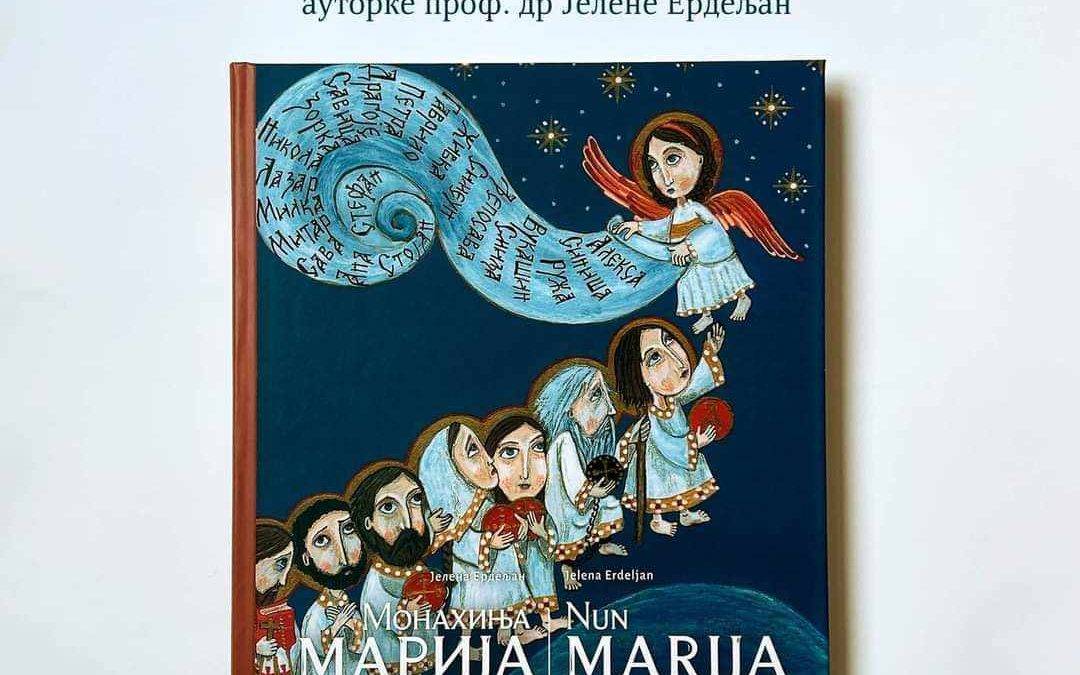
Scientific study of prof. Dr. Jelena Erdeljan "Pictures of the nun Maria: The Holy New Martyrs of Jasenova in the light of the Resurrection"
A representative bilingual Serbian-English scientific study by our prominent art historian Ms. Dr. Jelena Erdeljan, full professor at the Faculty of Philosophy of the University of Belgrade, was published by the Museum of Genocide Victims under the title "Pictures of the Nun Maria: The Holy New Martyrs of Jasenovac in the Light of the Resurrection".
The reviewers of this scientific study are the art historian Mrs. Prof. Dr. Sarah Offenberg (Ben-Gurion University of the Negev, State of Israel) historian and museum advisor at the Museum of Genocide Victims Mr. Dragan Cvetković, Ph.D., and graphic artist and curator at the Museum of Genocide Victims Ph.D. Nikola Radosavljević.
The publication of this publication was made possible by the Ministry of Culture, Telekom Srbija and the Foundation of the Museum of Genocide Victims.
The monographic publication, as the first to contain the integral testimony of the nun Maria (Antić), a member of the monastic family of the Serbian Orthodox monastery of the Birth of St. John the Baptist in Jasenovac (Pakračko-Slavonska Diocese), is thus enriched with the direct experience of prayer, existence and creativity in the most suffering place for Serbian nation in its entire history.
The publication is inspired by the strength and beauty of the works of the nun Maria, in which icon painting traditions are mixed with the naive and elements of comics and graphics of the Far East, and they merge into the tragedy of all the victims of Jasenovac and the renewed life of today's monastery, erasing the border between Heaven and Earth.
Inspired by the real and tragic events that took place in the system of concentration and death camps of the NDH in Jasenovac, the works of the nun Maria are iconic performances and a modern witness of a time and an area that is still a place of pain, suffering, suffering and memory.
The heavenly dimension of the works, quotations from the Old and New Testaments, prayers from the service to the Holy New Martyrs of Jasenovac, which are part of the publication, are the most poignant testimony about Jasenovac as the greatest place of loss for the Serbian people with at least 115 large mass graves and an unknown number of scattered smaller graves.
The works were performed by the author, who is a nun, and not a trained visual artist. Therefore, in this case, art was used as a concept and a kind of channel for the implementation of spiritual and universal, almost divine thought in order to embody it in the works of the nun Maria.
Although the works are subtle in their format, color, technique and approach to art, they are universal images of the world that is still suffering today, the scenes that are repeated again and again reflect the future fear that persists and feeds on the suffering from the recent past of our Serbian people, the fear of the absolute destruction of humanity, humanity , no less awareness of the tenderness and needs of others, which is why they call for reconsideration and reflection on what it means to be human.
Excerpts from reviews
"This book is important for all those who are dedicated to understanding the issue of art and genocide, with a special focus on the genocide that the Independent State of Croatia carried out against Serbs, Jews and Roma. The author's insightful considerations make a significant contribution to the field of art history, shedding light on the complex geopolitical issues of Serbia, Croatia, as well as Bosnia and Herzegovina. Moreover, they delve deeply into the topic of the culture of memory and the key role that belongs to monastic traditions, based on a comprehensive examination of the artwork of the nun Maria. The works of art and their interpretation presented in this book span an impressive array of theological, social, and political discourses.”
prof. Sarah Offenberg, Ph.D
art historian
Ben-Gurion University of the Negev (Israel)
"The book of Prof. Dr. Jelena Erdeljan entitled "Pictures of the Nun Maria: The Holy New Martyrs of Jasenovac in the Light of the Resurrection" certainly arouses attention with a topic that is insufficiently addressed in our scientific community. Visual depictions of war suffering are not unknown in our artistic space, but iconographic depictions have not been processed until now. Although the book deals with the art of icon painting and the suffering in Jasenovac, as well as the approach of the nun Maria to this topic, this publication also deserves the attention of historians. Nun Marija, in her iconographic works, managed to sublimate the collective awareness of the suffering and suffering of the Serbian, Jewish and Roma people in the Independent State of Croatia, primarily in Jasenovac, and to highlight individual examples of martyrdom by naming victims and sufferers. In addition, on her icons, she also presented individuals who survived the horrors of the genocide, depicting them as continuity of life and triumph over death, as symbols of the continuity of the Serbian people and the Orthodox Church in that area, seeing them at the same time as inevitable witnesses of those events."
Dr. Dragan Cvetković
historian and museum advisor
Genocide Victims Museum
"The author gives universal meaning to specific historical data so that the terrible crimes committed against the Serbian, Jewish and Roma people by the Independent State of Croatia during the Second World War outgrow their time frame and become a universal symbol of suffering. Erdeljan considers, interprets and "translates" visual compositions full of symbols, their complex and synthetic structures, while, on the other hand, the nun Maria herself underlines what we see in the works. This unique symbiosis of two texts, with accompanying reproductions of works, photographic notes from the field (Monastery of the Birth of St. John the Baptist in Jasenovac and the Jasenovac Memorial Area) and those from the Photo Collection of the Genocide Victims Museum, offers us a special source of knowledge about the most tragic period of the national of history, time and space, which are formidable in themselves. The entire oeuvre of the works of the nun Maria gives an original and poignant insight into the power of the icon-image, its importance in the modern moment and its strength in the perception and visualization of genocide."
Ph.D. Nikola Radosavljević
graphic artist and curator
Genocide Victims Museum
PHOTOS
RELATED ARTICLES
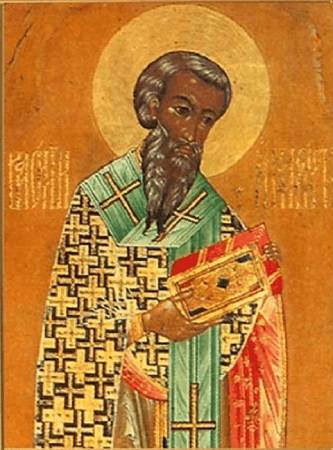
Calendar for May 9 His Homilist Basil of Amasia
Licinius, the son-in-law of Emperor Constantine, whose sister he had married,...
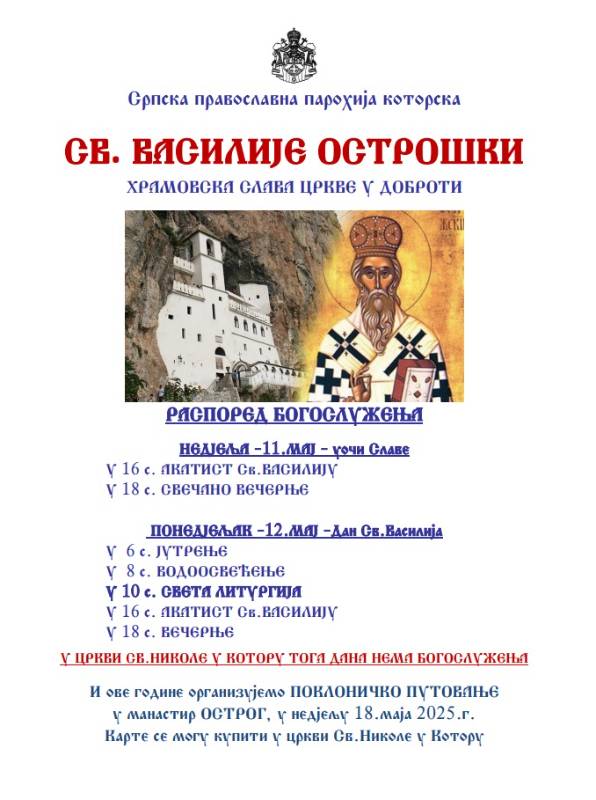
WORSHIPS ON THE OCCASION OF ST. VASILIJE OSTROŠKI
SERBIAN ORTHODOX PARISH OF KOTOR ANNOUNCES WORSHIPS ON THE OCCASION OF ST....
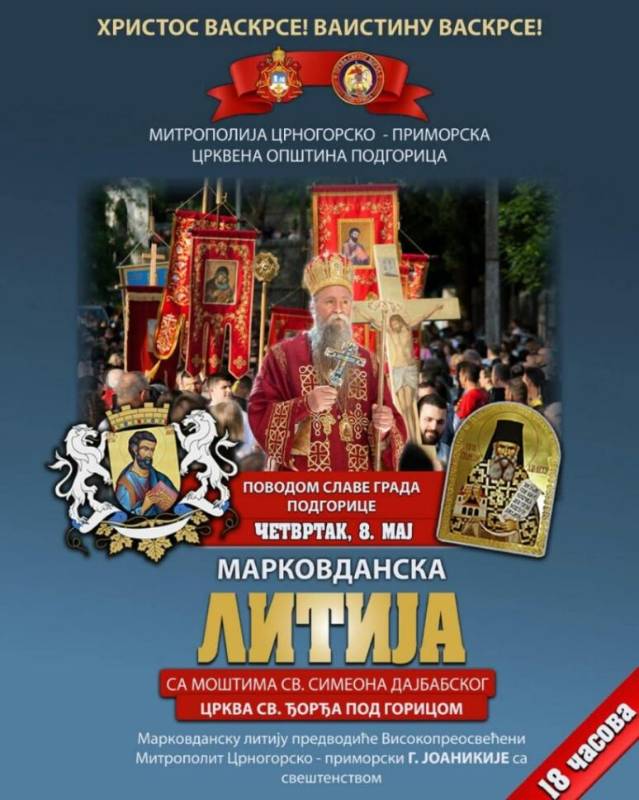
St. Mark's Day procession in Podgorica
On the occasion of the celebration of the city of Podgorica, the...


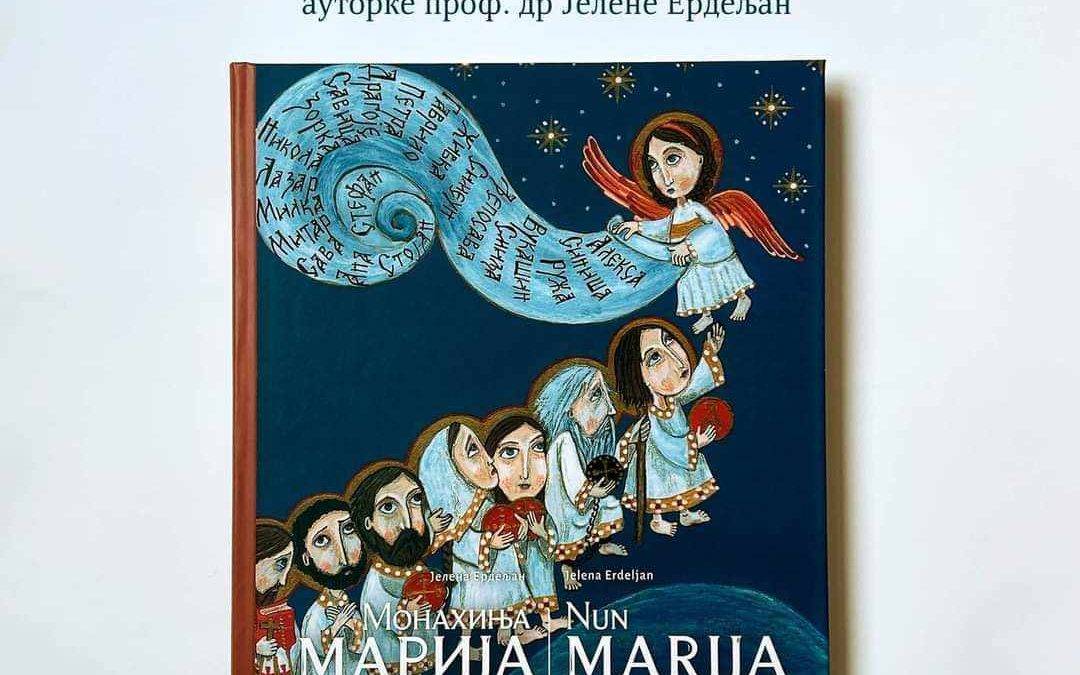

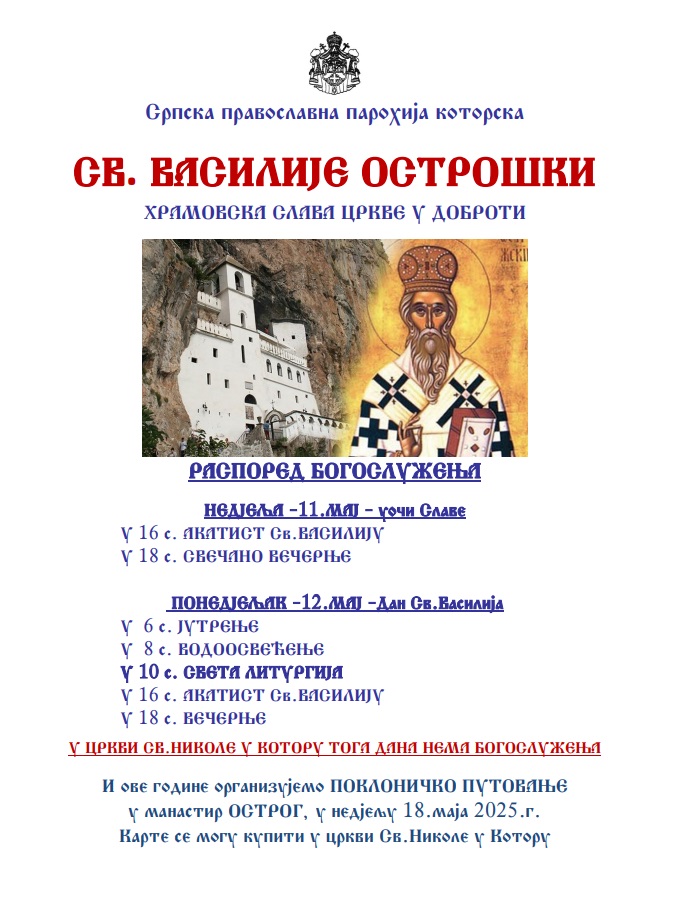
.png)